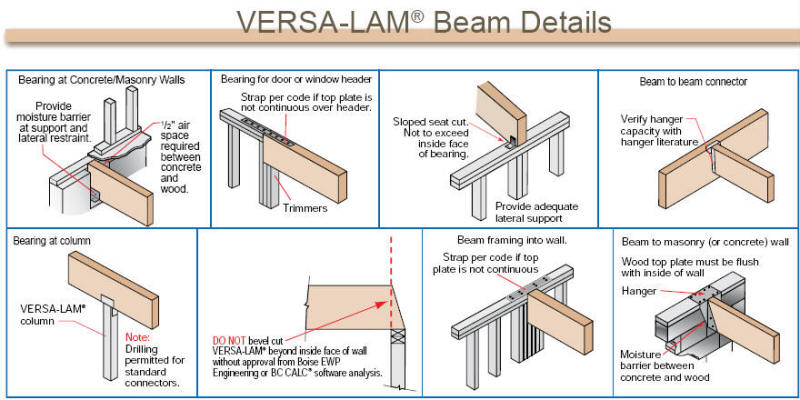


Here, one end of the beam landed above the foundation wall, while the other was directly over a column in the basement. (Lumberyards often provide this service for free.) Each end of the beam imposes a substantial load that requires a direct path through the framing to the foundation. In most cases, a temporary wall has to be built much closer to the existing wall, or even in contact with it, to catch the joist overlap and to support the floor. I was lucky in that the joists above overlapped by several feet and so the temporary wall could be held back that far, which provided more room to work. Replacing a wall with a beam requires carrying the loads while the old wall is being removed and the new beam is being installed. It would have been difficult to raise the assembled beam, but the trick is to raise one piece at a time and then fasten the three together in place. Here, a new beam was made from three 16-ft.-long 1-3/4-in.

Whether a beam is made from engineered lumber or regular old 2x12s, the challenge is weight. Remodeling carpenters routinely set large beams in cases such as the one shown here, where the beam replaces a bearing wall.


 0 kommentar(er)
0 kommentar(er)
